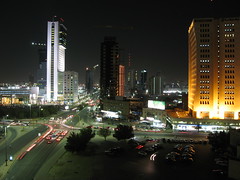Are compact cities a desirable planning goal?(14 page pdf, Gordon, Peter; Richardson, Harry W, American Planning Association. Journal of the American Planning Association, Winter 1997)
Today we review a paper written more than a decade ago that presents arguments and some factual evidence in favour of sprawl (or “growth” as the authors term it) and against the trend toward more and more concentrated populations in the urban area. This is an important debate because of the economic and environmental issues involved. Readers of this post are invited to examine some of the measures presented in the paper as general indicators, as they apply to individual cities to see if they apply there.
Key Quotes:
“many planners advocate “compact cities” as an ideal in contrast to increasingly spread-out metropolitan development”
“more subsidies are given to auto travel
- Federal, state and local expenditures for highways were $66.5 B in 1991; revenues were $53.8 B
- Federal state and local expenditures for transit were $ 20.8B
- on a per-passenger-mile basis the auto subsidy [in the USA] is .54 cents, the transit subsidy is 29.2 cents (54 times as large)
- air pollution costs per mile [in southern California] were 3 3.6 cents and congestion costs were 7.5 cents..and up to an additional 11 cents per passenger mile of parking subsidies…the full auto subsidy adds up to 22 cents per passenger mile..falls short of the transit subsidy"
“suburbanization has been the dominant and successful mechanism for reducing congestion. It has shifted road and highway demand to less congested routes and away from core areas”
“Rapid advances in telecommunications are now accelerating the decentralization trends set in motion by the advent of the automobile. In 1890, the “:effective radius” of US cities was said to be 2 about miles, based largely on pedestrian access… this has grown to 8 miles by 1920 to 11 miles by 1950 and to 20-24 miles by the 1970s”












No comments:
Post a Comment